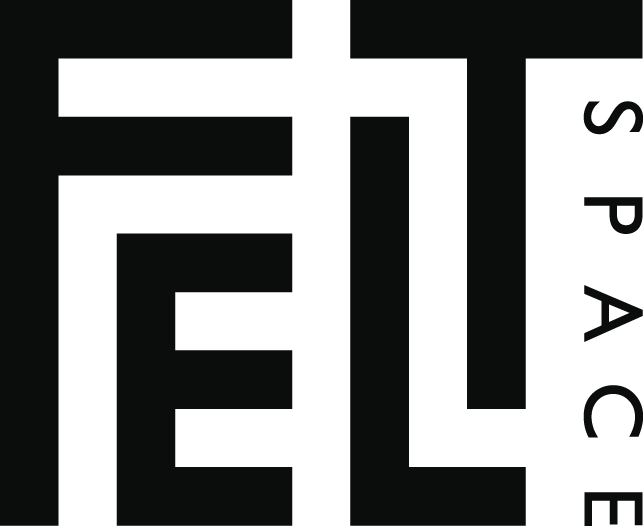Jen Mathews: City of Future Excess / Loaded / Self Portrait as OK Cupid Questionnaire
Artist: Jen Mathews / Georgina Banks / Carla Adams
Author: Melissa McGrath
Art Time
Those slower moments. Or maybe they rush by so swiftly, you're grasping for each unique motion as it ceases to exist. Those casual glances of awkward angles that floor you, mid step; or the awkward moments when you feel as though you're failing to see (as casually as possible). The agonising seconds in which looking at that, you see you too clearly.
As presences in the gallery ebbed and flowed, City of Future Excess by Jen Mathews benefited from a gentle, repeated, slowed viewing. Witnesses to the successive set of events across the evening, lingered with these globular sculptures and layered videos for a conglomeration of moments. For your time, you are granted edited views, finer details, questions.
Videos, stand as a shifting backdrop of theoretical source material, setting the scene for a forest (graveyard?) of sculptures. Picking careful steps through these monoliths again and again, uncovered - like a hands-free archeologist - each readymade component and echo of a construction process almost sedimentary. Piecing together a place, a feeling, a narrative. The sense of experiencing the past-present-future simultaneously, is as cumulative as the Microsoft PowerPoint effects spinning images across the false horizon.
“Waiting for the work of art produces a temporal disturbance that takes us out of ‘human time’ and puts us into the ‘object’s time.’ As viewers, the moment in which we realize the collision of these two kinds of time causes a profound sense of anxiety. This is an anxiety caused by temporal uncertainty: the beholder’s innate curiosity to understand the world prompts [them] to cede the agency of human time, to stay and reconcile the unknown durations of both the work and of [their] stay in front of it.” (1)
That anticipation. The anxiety of waiting for a work, with a work. Thrilling up the back of your neck as you step forward, then back across a threshold unveiled by a whisper of a caution. Piquing your awareness of the disparity between what is taking place behind you, around you, and that which you are stepping toward.
The performance at the centrepiece of Georgia Banks’ Loaded, whet the appetite with a healthy dose of anticipation. Ambiguity laced the artist’s prefacing comments before she disappeared behind a shroud to prepare, which, once removed, still lingered as a mental barrier. Stretched is her body along the wall, upon the structure. The wall behind her shows its scars, it's history. Strikingly (unflatteringly?) lit from above are the patched holes and gouged channels of plaster/ are the features of this woman's body as she grimaces, shudders, relaxes, repeats.
Outside it is loud and people speak freely amongst the sculptures; in this room you don't talk, as if time has stopped. Each second recognised, laboured upon. There is an element of the Sisyphean in the motions of this performance. Oscillating between composure and a brutal release, each upswing carries the promise of finality, yet turns full circle to a depth of pain. Witnesses to this cycle, this endless loop, depart and return, building a collective anticipation as the clock approaches it’s deadline. The arbitrary climax is reached and with an unforgiving abruptness, time flows once more with the pace of conversation, dinner plans and tomorrow’s responsibilities. All that remains are ephemeral traces, ‘wounds’, a monument standing in testament to what has passed, what was endured.
“The property of art as well as criticism indirectly feeds the making of new social forms across space and time” (2)
Those who have lingered long enough, persisted, spill outward from the gallery. Gathered together on the pathway, taking steps out onto the street as though to slow the passage of passersby, Carla Adams’ Self Portrait as OkCupid Questionnaire unfolds.
This work does not rush. It moves at the pace of your brain. You can see each thought, each hesitation, the unconscious movements of options weighed. As each answer is tabled on the screen, the artist discloses to the collective presence, a reflection of herself. In witnessing this personal time, both considered, but lacking self-conscious, you are freed to converse, share, within a parallel bubble of intimacy to that cultivated by a silent room and a computer screen. Within this paradigm of formulaic process crossed with intimate revelations, time slips away, unnoticed.
It took me four months to write this essay.
I finally found the time.
(1) Elizabeth Buhe, 2011, ’Waiting for Art: The Experience of Real Time in Sculpture’ in Contemporaneity: Historical Presence in Visual Culture, Vol 1 pp118-136. https://contemporaneity.pitt.edu/ojs/index.php/contemporaneity/article/view/20
(2) Elizabeth Freeman, 2010, Time Binds: Queer Temporalities, Queer Histories, p xix, Duke University Press. https://books.google.com.au/books?id=iYe8Kp9XXT4C&printsec=frontcover#v=onepage&q&f=false
